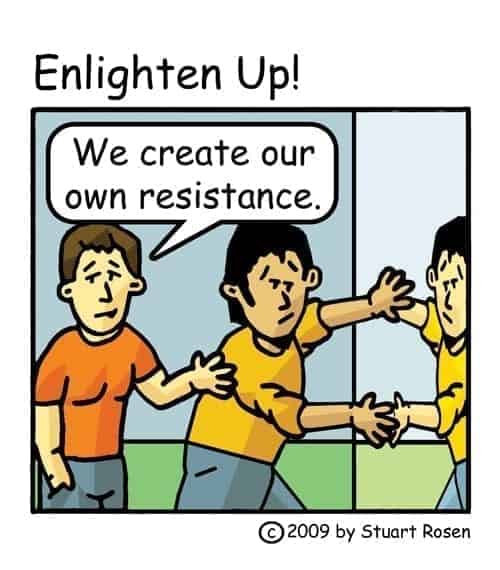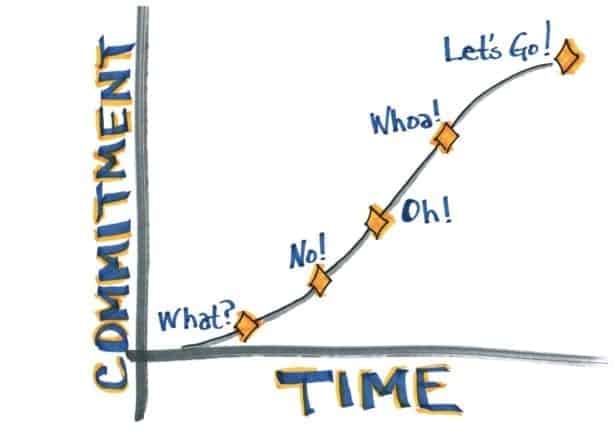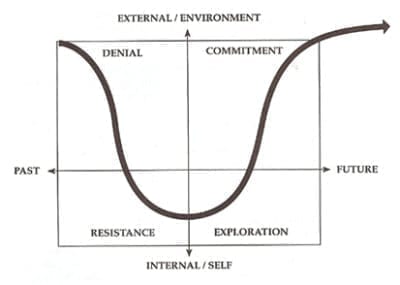Driving User Adoption – Are You The Problem?
Often in the information technology industry, the problems we face are not always technology related. In fact, it can most likely be the people around the technology that need attention for a resolution. Over time, people lose their sense of fearlessness and somehow, something deeper takes root.
Resistance to change.
If you look carefully, resistance is the root for many of the issues that we face in the world today. We live in a time where the world is transforming at a pace faster than ever before. Yet, somehow we can’t quite seem to catch on as fast as these changes occur, especially in the IT industry.
This post is not to denounce any individuals or organizations who resist change, but a way for them to transform resistances into success.
Resistance is simply a natural push back that occurs when we notice a disruption in our comfort zone. Essentially, it is the thing that holds people back from achieving true success in any endeavor they choose to take.
Why Adoptions Fail
In terms of the IT Industry, you’ll notice hundreds of new tools and software developed to make some aspect of our lives easier. Yet, most adoptions fail because of low levels of awareness on tackling the true problems at hand. Without understanding the natural resistance to change that occurs, an organization will not truly reap the benefits of any tool that they are trying to implement. Imagine that a new tool has been released which would help an organization achieve in increase in production by say 20-30%. The tool has great functionality and yet a few months after Go-Live, the adoption is a failure on many fronts.
“As humans, we resist change, and if an organization or the individuals themselves don’t understand how to deal with it, success will be hindered”.
If in this example, the technology requires a change in a business process, adapting to the change becomes chaotic. Do you see why? Of course there are many variables in play but without users adopting, the technology will not work as intended. As humans, we resist change, and if an organization or the individuals themselves don’t understand how to deal with it, success will be hindered.
Understanding Resistance
Why do we resist? Is it a fear that holds us back? What is it really? As people, we take actions whether we choose to or not; even not doing something is an action of inaction. In the case of adapting to a new tool that is being implemented as a key part of a business process, users will naturally hesitate.
Think back to the last major technology change you were exposed to. Did you resist a little? Why? Here might be a few reasons:
Even if you’re in IT, you have been the user. And from that perspective you have a better understanding of why resistance may exist when adopting to a process change or a new tool.

Channeling Resistance into Success
Much of the control over accepting change ultimately rests with the user. While the project team is responsible for change management as critical component of user adoption, helping users uncover the real reason they are resisting will lead to self-awareness.
One way to uncover the root cause of resistance is to conduct the 5 Whys Analysis.
When you have identified the true reason behind your resistance, you can tackle specific steps to get over that struggle:
The sooner you accept and acknowledge the thing you are resisting or avoiding, the sooner you can tackle it. “I/We have been resisting _____.”
In terms of facing a change in a business process, the payoff for a person to resist can be that he/she feels familiar and in control with the old process. Essentially, a limiting belief that is being fueled by fear the source of the resistance. “I am afraid I won’t be good at my job anymore.”
By surrendering and embracing a situation that you find yourself in, you allow yourself as a person or an organization to let go of the resistance without judgment. “I accept this situation without any judgment on myself.”
Finally, you need to channel and transform the resistance towards a positive goal that is in align with your vision. Without a vision, an organization will struggle regardless of the tools or employees in place. “Where do we want our organization to be going forward?”

The Commitment Curve
Having Faith
As an individual and even as an organization, learn to trust the process. By holding faith that things will work out, you will be able to truly transform resistance into success. This is especially true in times of difficulty.
An organization or business that is able to live by this principle can achieve success as it relates to their vision. Simply imagine an organization that lays out a vision, has teams of people implementing better tools and processes to help achieve that vision and embracing all that comes from it; both good and bad. It is a simplified example that highlights consistent actions to overcome resistance and transforming it for success.
Looking for more on digital innovation?
Explore more insights and expertise at Smartbridge.com/digitalinnovation
Keep Reading: The Art of Problem Solving in Business
There’s more to explore at Smartbridge.com!
Sign up to be notified when we publish articles, news, videos and more!
Other ways to
follow us:



